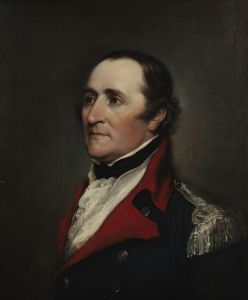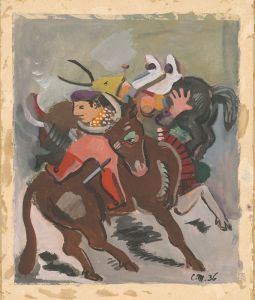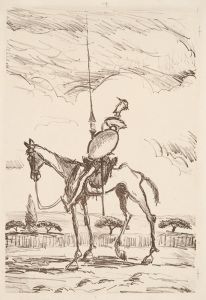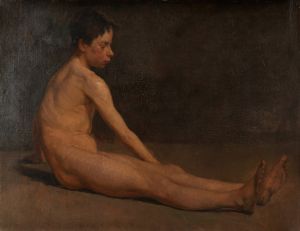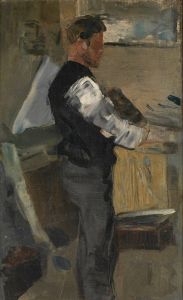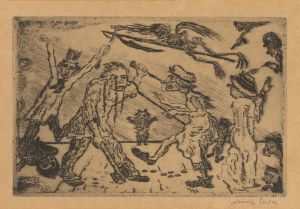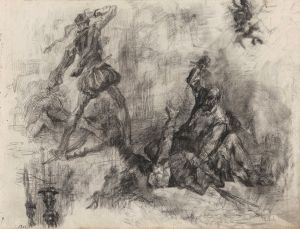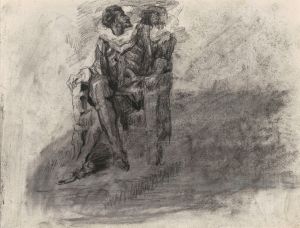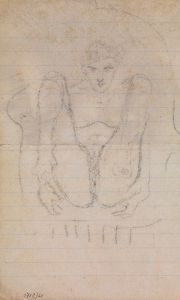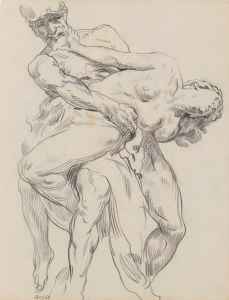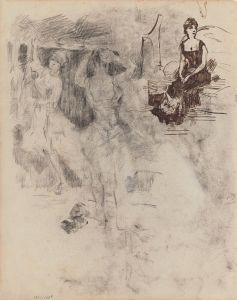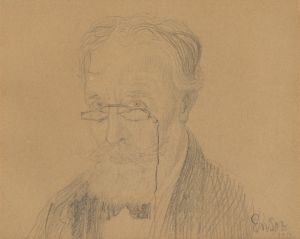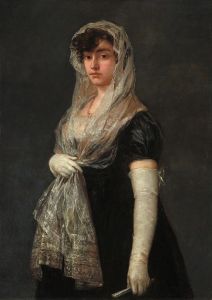
Don Quixote
A hand-painted replica of James Ensor’s masterpiece Don Quixote, meticulously crafted by professional artists to capture the true essence of the original. Each piece is created with museum-quality canvas and rare mineral pigments, carefully painted by experienced artists with delicate brushstrokes and rich, layered colors to perfectly recreate the texture of the original artwork. Unlike machine-printed reproductions, this hand-painted version brings the painting to life, infused with the artist’s emotions and skill in every stroke. Whether for personal collection or home decoration, it instantly elevates the artistic atmosphere of any space.
James Ensor, a prominent Belgian painter known for his avant-garde style and unique approach to subject matter, created the artwork "Don Quixote" in 1860. Ensor's work is often characterized by its vivid color palette, intricate detail, and a penchant for the fantastical and grotesque, which aligns with the themes found in Miguel de Cervantes' classic novel "Don Quixote."
Ensor's "Don Quixote" reflects his fascination with the absurd and the theatrical, elements that are central to Cervantes' story. The novel, first published in the early 17th century, follows the adventures of a delusional nobleman, Don Quixote, who believes he is a knight-errant destined to revive chivalry. Accompanied by his loyal squire, Sancho Panza, Don Quixote embarks on a series of misadventures, often mistaking mundane objects for fantastical foes.
In Ensor's interpretation, the artist captures the essence of Quixote's character, emphasizing the themes of illusion versus reality and the thin line between madness and idealism. Ensor's style, which often includes elements of satire and social commentary, is well-suited to depict the quixotic nature of the protagonist. His use of bold colors and dynamic compositions brings a sense of movement and energy to the piece, reflecting the chaotic and often humorous escapades of Don Quixote.
Ensor was part of the Symbolist movement, which sought to express ideas and emotions through symbolic imagery and themes. This movement often explored the darker aspects of human nature and the subconscious, making Don Quixote an apt subject for Ensor's artistic exploration. The character's delusions and the resulting consequences serve as a metaphor for the human condition, a theme that resonates with the Symbolist ethos.
Throughout his career, Ensor was known for his innovative techniques and willingness to push the boundaries of traditional art. His work often included elements of caricature and grotesque imagery, challenging societal norms and conventions. This approach is evident in "Don Quixote," where Ensor's distinctive style adds a layer of complexity to the character's portrayal, inviting viewers to reflect on the nature of reality and the power of imagination.
Ensor's contribution to the art world extends beyond his individual works; he played a significant role in the development of modern art in Belgium and influenced subsequent generations of artists. His ability to blend humor, satire, and profound philosophical themes in his work has cemented his place as a pivotal figure in the history of art.
In summary, James Ensor's "Don Quixote" is a testament to the artist's skill in capturing the essence of complex literary characters through his unique artistic lens. By combining elements of Symbolism, satire, and vibrant visual storytelling, Ensor offers a compelling interpretation of Cervantes' timeless tale, inviting viewers to ponder the interplay between reality and illusion.





